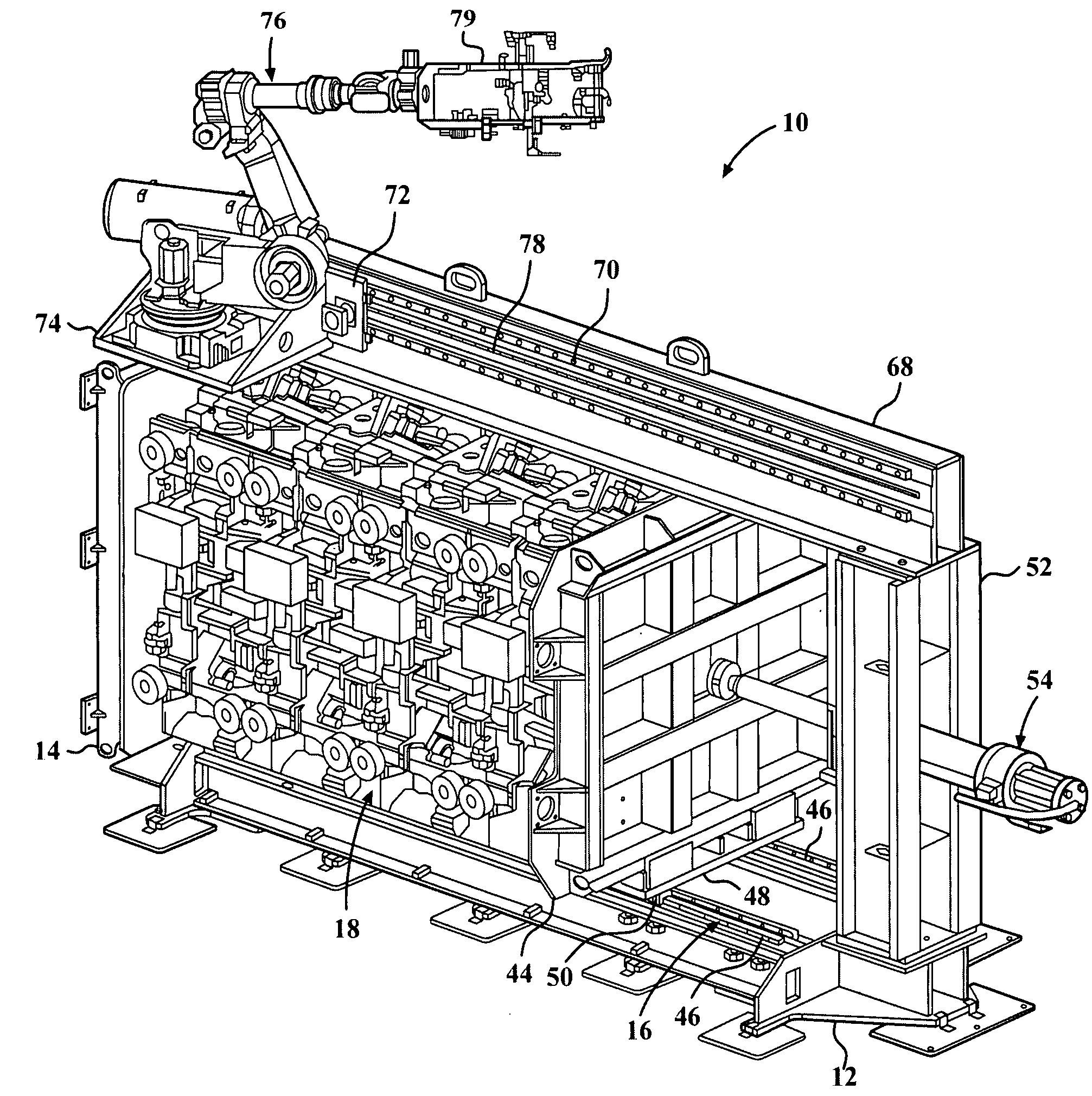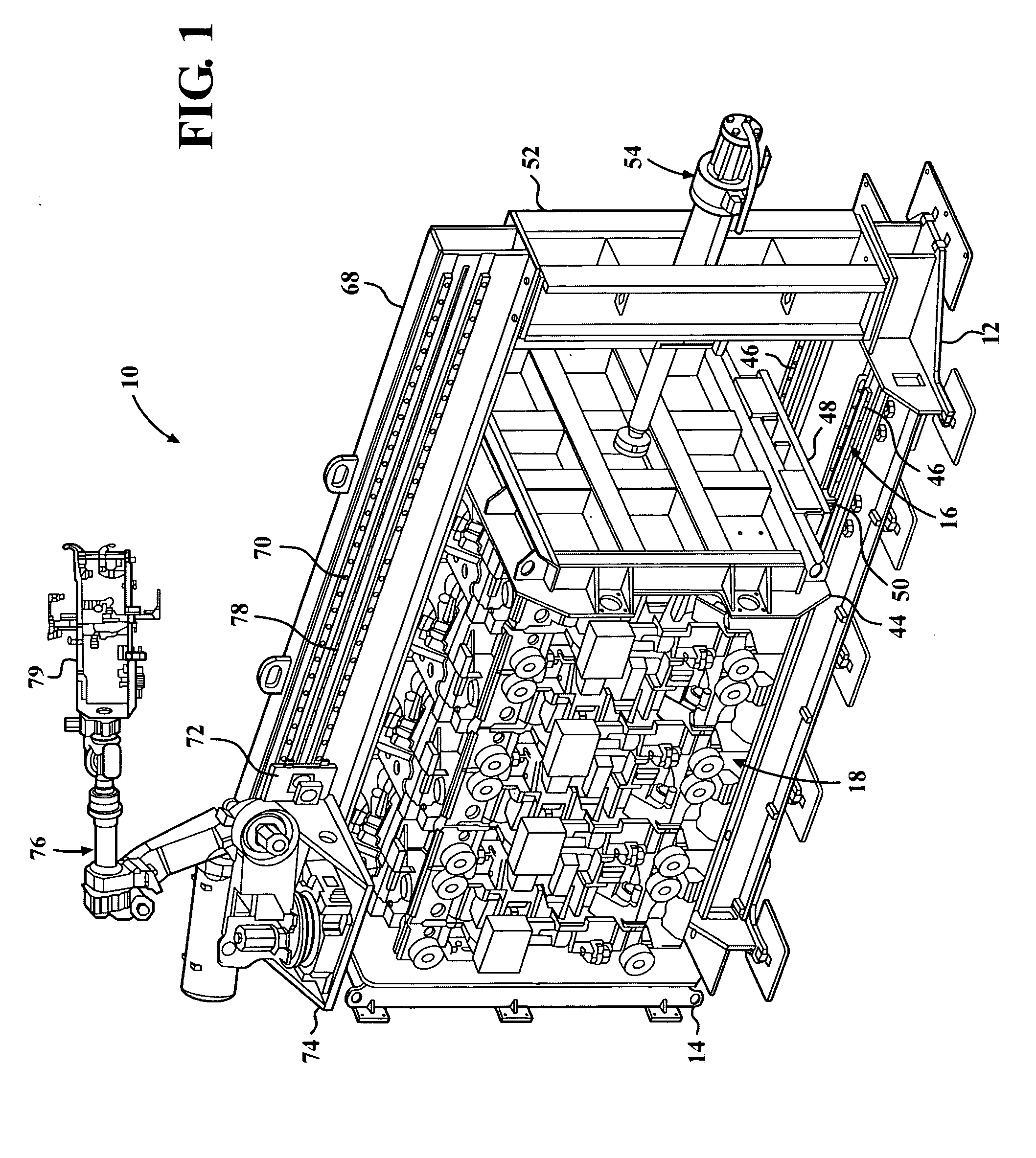Horizontally stacked hemming press
- Summary
- Abstract
- Description
- Claims
- Application Information
AI Technical Summary
Benefits of technology
Problems solved by technology
Method used
Image
Examples
Embodiment Construction
[0027]Referring now to the drawings in detail, numeral 10 generally indicates a horizontally stacked hemming press in accordance with the present invention. The horizontal hemming press 10 includes a plurality of cooperably operable hemming die sets horizontally arranged in series, and in contrast to conventional presses the plurality of hemming die sets are horizontally actuated and moved (opened / closed) in a generally horizontal direction. The horizontal hemming press 10 is shorter (and therefore has a reduced height requirement) in comparison to conventional vertical presses. The horizontal hemming press 10 also has a smaller footprint and therefore provides a floor space savings in comparison to using a plurality of presses each having a dedicated die set, to using a plurality of table top hemmers each for a dedicated part / product, and to using a plurality of roller hemming cells each for a dedicated part / product. The horizontal hemming press 10 further provides an energy saving...
PUM
| Property | Measurement | Unit |
|---|---|---|
| Pressure | aaaaa | aaaaa |
Abstract
Description
Claims
Application Information
 Login to View More
Login to View More - R&D
- Intellectual Property
- Life Sciences
- Materials
- Tech Scout
- Unparalleled Data Quality
- Higher Quality Content
- 60% Fewer Hallucinations
Browse by: Latest US Patents, China's latest patents, Technical Efficacy Thesaurus, Application Domain, Technology Topic, Popular Technical Reports.
© 2025 PatSnap. All rights reserved.Legal|Privacy policy|Modern Slavery Act Transparency Statement|Sitemap|About US| Contact US: help@patsnap.com



